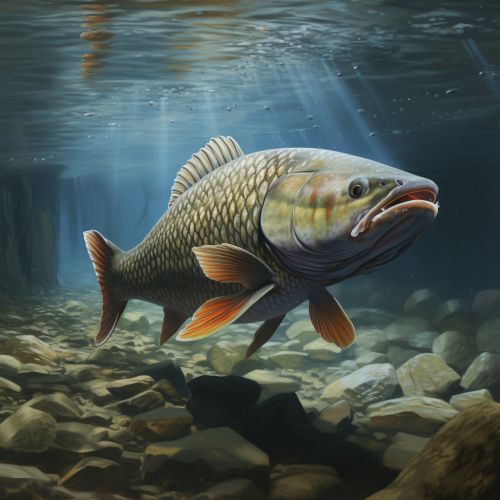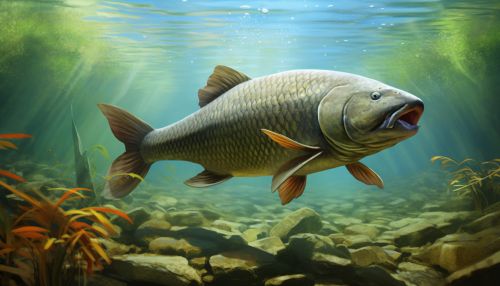Potamodromous Migration
Definition and Overview
Potamodromous migration refers to the movement of certain species of fish within freshwater systems. Unlike anadromous and catadromous species, which migrate between fresh and saltwater environments, potamodromous species remain within freshwater habitats for their entire life cycle. The term "potamodromous" is derived from the Greek words "potamos", meaning river, and "dromous", meaning running.
Biological Significance
Potamodromous migration is a crucial aspect of the life cycle of many freshwater fish species. It allows these species to exploit different habitats at different stages of their life cycle, often moving between feeding and breeding grounds. This migration is typically triggered by changes in environmental conditions, such as temperature or water flow, and may involve movements of varying distances, from a few meters to hundreds of kilometers.
Migration Patterns
Potamodromous migration patterns can be highly variable, both in terms of the distance travelled and the timing of migration. Some species may undertake long-distance migrations, moving between upstream and downstream habitats, while others may migrate over shorter distances within a single water body. The timing of migration can also vary, with some species migrating seasonally, while others may migrate more sporadically, in response to specific environmental cues.
Examples of Potamodromous Species
Several species of freshwater fish exhibit potamodromous migration. These include, but are not limited to, the common carp, northern pike, and walleye. These species typically migrate upstream to spawn, then return downstream to their feeding grounds.
Factors Influencing Migration
Several factors can influence the migration of potamodromous species. These include environmental conditions, such as water temperature and flow, as well as biological factors, such as the availability of food and suitable spawning habitats. Human activities, such as dam construction and water pollution, can also impact potamodromous migration, potentially leading to declines in fish populations.
Ecological Implications
Potamodromous migration has important ecological implications. By moving between different habitats, potamodromous species can contribute to the transfer of nutrients and energy within freshwater ecosystems. However, disruptions to migration patterns, due to factors such as habitat degradation or climate change, can have significant impacts on these ecosystems.
Conservation Issues
Many potamodromous species are of economic and ecological importance, and their conservation is a significant concern. Threats to these species include habitat loss and degradation, overfishing, and the impacts of climate change. Conservation strategies for potamodromous species typically involve the protection and restoration of critical habitats, as well as the management of fishing activities.


